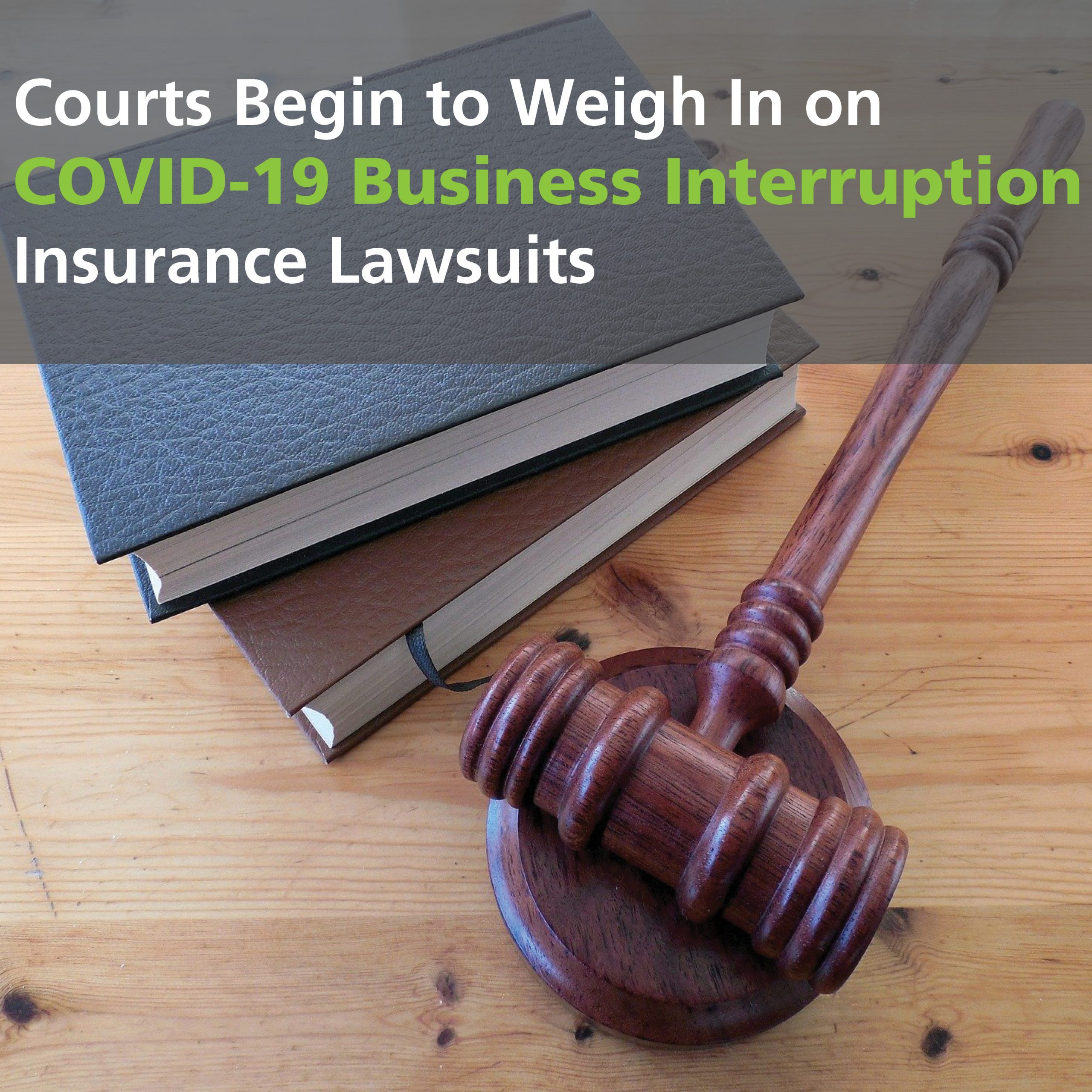Courts Begin to Weigh In on COVID-19 Business Interruption Insurance Lawsuits

The last five months have seen a flood of insurance coverage lawsuits filed by businesses against insurers based on claims denials for business interruption losses stemming from the COVID-19 pandemic. Indeed, the United States Judicial Panel on Multidistrict Litigation, in a recent order, wrote that it had received notice of 263 such actions pending in 48 federal districts, and naming more than a hundred insurers as defendants. With several months having now passed since the first lawsuits were filed back in March, the anticipated tide of decisions on insurers’ motions to dismiss has begun to come in, providing some insight into how courts will resolve the novel coverage issues presented by these lawsuits.
On August 12, a Missouri federal court denied Cincinnati Insurance Company’s motion to dismiss claims brought by several plaintiffs seeking coverage under their property insurance policies (Studio417, Inc. v. Cincinnati Insurance Company, Case No. 20-cv-03127-SRB (W.D. Mo. Aug. 12, 2020)). The plaintiffs—several restaurants and a hair salon in the Kansas City metropolitan area—asserted claims on behalf of a putative class of policy holders under “all risk” property insurance policies issued by Cincinnati Insurance, alleging that the insurance company wrongfully denied their claims for losses suffered during the pandemic under the business income, civil authority, ingress and egress, dependent property, and sue and labor provisions in their policies.
In support of dismissal, Cincinnati Insurance had argued that the property policies only provided coverage for “income losses tied to physical damage to property, not for economic loss caused by governmental or other efforts to protect the public from disease” for each type of coverage at issue. Central to the plaintiffs’ argument was their allegation that their properties were “likely” infected by COVID-19 from customers, employees, and/or other visitors who visited their covered properties, and that the virus therefore rendered their properties unsafe and unusable thereby forcing them to suspend or reduce operations.
Under the plaintiff-friendly motion to dismiss standard, and applying Missouri state law, the court decided that the plaintiffs had adequately pleaded a “direct physical loss” to their properties. In reaching its conclusion, the court distinguished physical damage from physical loss, opining that “loss” meant “the act of losing possession” and “deprivation.” Based on this definition, the court found the plaintiffs’ allegations that COVID-19 was a physical substance that deprived them of their property by making it “unsafe and unusable” was sufficient at the initial pleading stage to survive a motion to dismiss on each type of coverage at issue. The court did, however, seem somewhat uncertain about its decision given the absence of any case law directly on point, writing that “[s]ubsequent case law in the COVID-19 context, construing similar insurance provisions, and under similar facts, may be persuasive,” and invited Cincinnati Insurance to reassert its motion to dismiss arguments at the summary judgment stage, “if warranted.”
The following day (as if on cue) a federal court in Texas reached an entirely different result, dismissing a similar business interruption property policy lawsuit brought by several barbershops against State Farm Lloyds under Texas law. (Diesel Barbershop, LLC v. State Farm Lloyds, Case No. 5:20-CV-461-DAE (W.D. Tex. Aug. 13, 2020.) Expressing its sympathy for the plaintiffs’ situation, the court nevertheless held that “tangible injury to property” was required to establish “direct physical loss” within the meaning of the State Farm policies at issue. The court acknowledged that some courts had held contamination by substances like ammonia, E. coli and carbon monoxide was sufficient to establish a direct physical loss, and that these could be analogized to COVID-19, but held that Texas law required a “distinct, demonstrable physical alteration of the property.” This was a requirement that the COVID-19 contamination alleged by the plaintiffs could not satisfy.
But the Texas plaintiffs also had another (and perhaps bigger) problem due to the presence of an exclusion in their policies barring recovery for losses caused by a virus “that induces or is capable of inducing physical distress illness or disease.” Finding the exclusion unambiguous, the Texas court held that even if the plaintiffs could establish direct physical loss, the virus exclusion would bar their claims. The court thus dismissed the entire action with prejudice. Notably, although such exclusions are not uncommon in property policies, the issue was not one with which the plaintiffs in the Missouri case had to contend.
Although neither decision will be binding on any subsequent decisions of courts in Missouri, Texas, or elsewhere, both highlight the fact that whether insurance coverage exists for a particular loss suffered as a result of the COVID-19 pandemic cannot be determined in the abstract. Resolution will depend on the applicable state law, language of the insurance policy, and specific facts giving rise to the loss. And we will continue to see courts throughout the country reach varying results at the preliminary stage of these lawsuits as they struggle to address the novel coverage issues the pandemic has raised.
We are continuously monitoring business interruption litigation developments and other matters related to the COVID-19 pandemic and will provide updated guidance as it is available. The Graydon COVID-19 Task Force stands ready to assist with any questions you may have about your insurance coverage.
Industries & Practices
Media Contact
- office 513.629.2896
